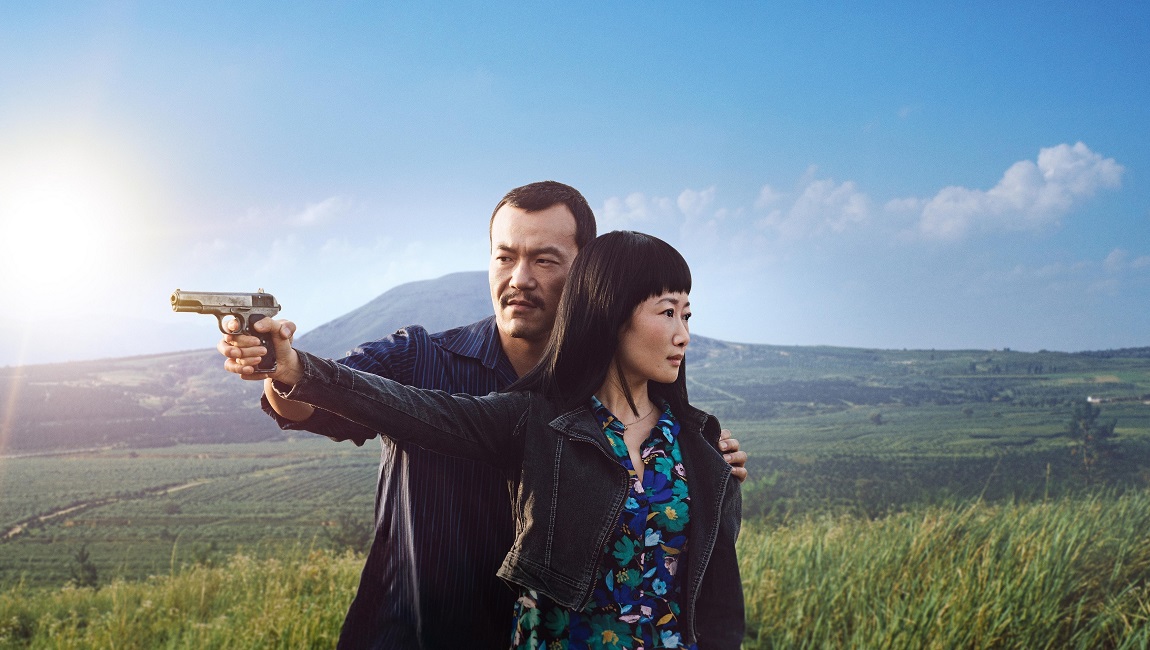Just as much an essential piece of historiography as it is a poetic, ruminative look at the effects of folklore on the Eastern European condition, Jessica Oreck’s eminently perceptive documentary The Vanquishing of the Witch Baba Yaga serves a narrative double-duty. As a visual introduction to the ways and means of those living in such countries as Ukraine, Romania, Hungary and Poland, Oreck’s film is a delicately shot marvel. We see lumberjacks felling trees, families hunting mushrooms, city folk wandering through urban environs that have long since lived past their prime, and these tenderly framed portraits of lives lived among a part of a world constantly thrumming with historic significance are, on their own, wondrously tactile.
But those sequences represent only a fraction of what Oreck’s film offers. They are buttressed by gorgeously animated episodes that tell the fairy tale of Baba Yaga, a frightening creature from Slavic folklore who takes two children, Ivan and Alyona, captive after they escape from some soldiers attacking their village. The illustrations, drawn and animated by Devin Debrolowski and Michelle Enemark, function as a story-within-a-story, outlining the various ways in which the Eastern European forest is traditionally seen to hide as much danger as it does wonder. This basic duality plays itself out repeatedly throughout the film’s 70-minute running time.
Essay film, docudrama, poetic documentary, ethnographic study, found-footage horror: Baba Yaga is all of these things. But what ultimately makes the film so special is its active, probing aesthetic drive toward metahistorical appreciation, as Oreck attempts to use the Baba Yaga story to frame her depiction of the modern psychological and environmental ramifications of centuries of historical trauma. If any of that makes the film sound dry or unwieldy, fear not. Far from a didactic history lesson, The Vanquishing of the Witch Baba Yaga plays instead as a filmmaker’s quest to gently probe the folkloric tendrils of Eastern European society, and its quiet vitality as a historically inquisitive document owes much to the ethnographic specificity of cinematographer Sean Price Williams’s Super 16mm camerawork. With the aid of amazingly intricate sound design, Williams (who also served as music supervisor) and Oreck marry image and sound in endlessly daring ways: The acoustics of the soundtrack seem to reflect themselves in the tenor of the captured images, whether it’s a skittering guitar line set to the panning of the camera as it searches the sky for seagulls, or a twinkly electronic drone as the lens tracks beside a highway filled with stalled cars and blank-faced passerby.
The film’s main claim to power lies mainly in its luscious images.
There’s not much of a narrative throughline in the film, but Baba Yaga never comes close to collapsing into a discursive mess. Even though the film’s main claim to power lies mainly in its luscious images, the narration — which combines original words written by the filmmaker with excerpts from the work of, among others, Bruno Bettelheim, Andreas Johns, and Vladimir Propp — holds it all together. The unnamed narrator serves both as an orienting device and a harbinger of philosophical intonations that invoke everything from man’s relationship to the environment to the ever-present underpinnings of a wartime mentality that, it’s clear to see, has fractured Europe many times before and may do so again.
It’s telling, then, that the film’s animated segments take place within the context of war. Oreck’s film is deeply cognizant of man’s tendency toward violence — and not just physical violence, either, but emotional violence: the ways in which we build barriers toward others who are unlike us, whom we may not fully understand. Baba Yaga offers an antidote to this thinking: Though we may inflict our own bounds, the film says, that doesn’t mean we can’t investigate the causes of those erected borders, whether through close examination of a culture’s folklore or otherwise. The mad beauty of Oreck’s film is that, above all else, it is about the human capacity to balance wonder with woe, to relegate tactile human accomplishment to wispy nothingness in the face of what nature can accomplish and what stories can tell us about it.
And who are we to say that storytelling can’t stave off the obsolescence of human existence by fusing the real with the unreal, the cultured with the wild, the natural with the man-made? In the film’s encapsulating moment, near its midpoint, the camera tracks a row of rural houses and the narrator’s hushed lilt intones that “there is confidence in striding along the orbits of the cosmos called home, but at the boundaries of the everyday, [at] the peripheries of habit, a virtual border shimmers.” The Vanquishing of the Witch Baba Yaga, in all its elliptical wonder, dances right along that border, dipping its toes toward both ends, chuckling all the while.








No Comments